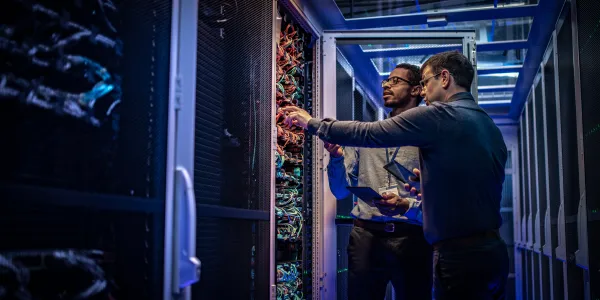In today’s fast-paced digital infrastructure environment, companies rely heavily on data center services to keep operations smooth and responsive. When in-house IT teams aren’t available on-site, businesses often depend on two critical support offerings: Smart Hands and Remote Hands services. While both are designed to assist with IT tasks inside a colocation facility, they cater to different levels of complexity and urgency.
In this guide, we’ll clarify the Smart Hands vs Remote Hands debate, break down their distinctions, and help you determine which service your organization truly needs.
What Are Smart Hands Services?
Smart Hands services refer to advanced technical support provided by on-site data center staff who perform complex tasks that go beyond basic physical operations. These technicians act as an extension of your IT team, performing real-time hands-on IT services as requested.
Typical Smart Hands tasks include:
- Hardware troubleshooting and diagnostics
- System reboots and server recovery
- Device installations and configurations
- Complex cabling, wiring, and patch panel tasks
- OS reinstallation and network device upgrades
Why it matters: Businesses with complex infrastructure setups, compliance needs, or real-time operational dependencies often require Smart Hands to carry out critical server maintenance services.
What Are Remote Hands Services?
Remote Hands services are basic on-demand tasks performed by data center staff that do not require high-level technical expertise. They are ideal for quick physical interventions when your team can’t be on-site.
Typical Remote Hands tasks include:
- Power cycling servers or equipment
- Securing loose cables or connections
- Inserting or removing tapes/media
- Visual inspections and status checks
- Pushing buttons or reading LEDs
Why it matters: These tasks reduce the need for sending in-house technicians to remote data centers and support basic remote data center operations efficiently.
Smart Hands vs Remote Hands: Key Differences
Here’s a breakdown of the fundamental distinctions:
| Category | Smart Hands | Remote Hands |
|---|---|---|
| Complexity | Advanced troubleshooting, setup, configuration | Basic physical tasks and support |
| Skill Level Required | Skilled technicians with specialized IT training | Entry-level staff with basic operational knowledge |
| Use Case | Server builds, system recovery, complex diagnostics | Power cycling, cabling adjustments, media swaps |
| Availability | Often available 24/7 but may require prior scheduling | Typically available 24/7 with faster dispatch |
| Cost | Higher due to complexity and expertise | Lower, flat-rate or hourly charges |
When to Use Smart Hands Services
Choose Smart Hands when:
- Your team needs real-time hands-on IT services for mission-critical systems
- You’re installing or upgrading server hardware or networking gear
- Diagnostics, OS reloads, or firmware updates are required
- You’re running hybrid or high-security environments requiring precise configuration
When to Use Remote Hands Services
Opt for Remote Hands when:
- You need quick fixes without technical depth
- Routine tasks such as media swaps or reboots arise
- On-site travel is impractical or too costly
- Visual verification is needed but doesn’t require analysis
Smart Hands Services significantly improved our data center efficiency. Outstanding support!
Combining Both Services for Optimal Data Center Operations
In many organizations, Smart Hands and Remote Hands aren’t mutually exclusive. In fact, the best colocation facility help strategies incorporate both services as part of a tiered support model. While Remote Hands provides routine assistance, Smart Hands bridges the technical gap by handling specialized tasks that keep infrastructure resilient and efficient.
This dual-layer approach is especially useful for:
- Global enterprises with distributed IT infrastructure
- Startups seeking cost-effective technical support
- MSPs and SaaS companies needing flexible coverage
Conclusion: Which One Do You Really Need?
The answer depends on your operational scope and IT maturity. For critical troubleshooting and technical configuration, Smart Hands is indispensable. For everyday physical interventions, Remote Hands is a fast and economical choice.
Ultimately, knowing the difference between Smart Hands vs Remote Hands empowers IT leaders to make strategic outsourcing decisions that minimize downtime and optimize data center efficiency.


Leave a Reply